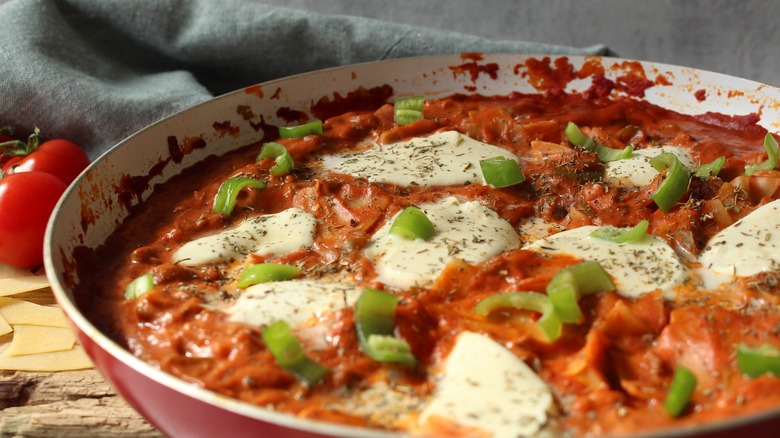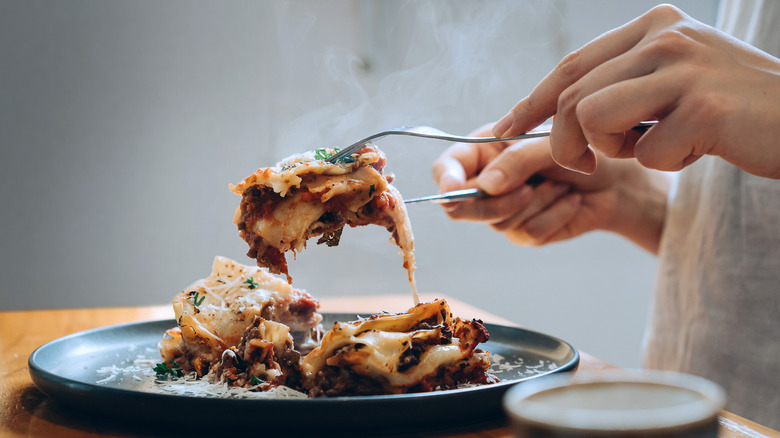Stovetop Skillet Lasagna Is The One-Pan Twist On A Classic Dish
Cheesy, savory, meat-and-tomato-filled lasagna layers don't happen by accident. There's plenty of work and time (sometimes over an hour) that goes into making this dish, whether you're cooking Kale Lasagna or whipping up a recipe with buffalo chicken. Plus, once you've finally assembled everything, most lasagna recipes need to go in the oven for 30 minutes to an hour.
But if you're craving this dish in the summertime and don't want to turn on your oven, or if you're just looking for a shorter overall cooking time, try making stovetop skillet lasagna. This may sound a bit unhinged at first, as we tend to think we need the oven to meld all of the flavors together. However, since you'll be covering your skillet and letting it simmer for a little while, just like you would with a soup, your layers will get plenty of time to settle into one another. But perhaps the biggest benefit of this method is that you can make the whole dish (yes, even if you're including meat) in one pan — while with the oven method, you would have had to saute any beef or veggies separately, then transfer everything into a baking dish.
How to make a one-pan lasagna masterpiece
So how do you keep this normally complicated dish all to one pan? First, you'll want to select the right skillet, although this isn't hard to do. There's no need for cast-iron here (although that works too). All you need is a big, deep pan with a lid. Your dish will turn out just fine without it, but as a bonus, you can broil your lasagna for a few minutes as the final step in your recipe, which will give your cheese a brown sheen — if you do, use an oven-safe skillet.
Start by cooking up your ground meat (if you're using it). You'll brown it with oil and seasonings like you normally would, then add in any chopped veggies that you want to saute. Afterwards, pour in your tomato-based ingredients (either just sauce or sauce and canned, diced tomatoes). Then, add in lasagna noodles broken into smaller pieces, stir everything around, and bring your whole skillet to a boil with the lid on. Turn your stove down so that your noodles simmer until they're fully cooked through, and then it's time to dollop your cheesy mixture (which typically includes a blend of cheeses and herbs) on top. Once the cheese has melted (which can be helped by replacing the lid), it's time to dig in.

